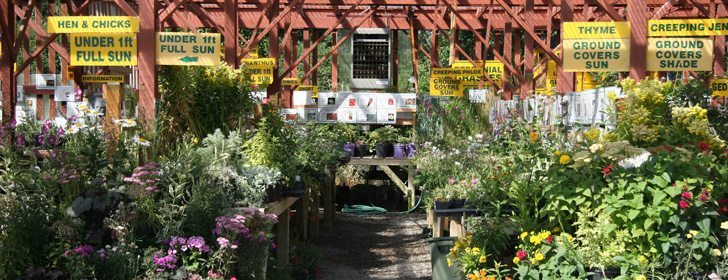BLACK DIAMOND, Alta. — Vale Greenhouses may be one of southern Alberta’s best kept secrets.
Located at the edge of Black Diamond, southwest of Calgary, visitors pass through the gates of an English style stone fence where they can enjoy an alpine retreat, a kinetic garden or they may sit in one of the carefully planned gardens built around a theme of colour and style.
Besides being an oasis in the dry foothills climate, this greenhouse owned and operated by Katrina Diebel offers plants that are acclimated to thrive in southern Alberta conditions.
Read Also

Pakistan reopens its doors to Canadian canola
Pakistan reopens its doors to Canadian canola after a three-year hiatus.
All the plants from the greenhouse are grown there and may take several years of nurturing before a customer sees them. The clients receive advice on what will survive, unlike picking up a generic tray of bedding plants from a local big box store.
The greenhouse opened in 1976.
Ann Vale, the original owner, started all her own plants with a goal of producing items that would grow well in local conditions. In 1990, her goddaughter, Katrina, took over and introduced new plants and horticulture ideas to a wealthy, well-travelled clientele that had seen European gardens and wanted to create some of that splendour at home.
Diebel travels extensively to find new items and has found plants do not have to be native but should come from an area similar to here. Often plants from Argentina or Russia may work here as opposed to those transplanted from Colorado, Montana or British Columbia.
“Southern Alberta is extremely unique. I have never found another place with the cold nights and the high alkalinity in soil,” she said.
“If you are going to bring in new perennials, you have to find it in an area that would be relative to our area,” she said.
Chinook winds can hit at any time, carrying the snow cover away and drying the soil out in summer, making plants vulnerable to sunburn even in winter. Combined with the high elevation and glacial type soil, gardening can be a challenge.
“There are a couple of different problems. Firstly, all our soil is clay based and it is very high in alkalinity. It basically is early soil. The water we use is limestone-based because it comes from limestone mountains,” she said.
Gardeners looking for advice often read the labels attached to a tray of bedding plants but those instructions may not apply to prairie growing zones.
“Never read those little tags because they come from the southern States. Good to 30 below doesn’t mean anything. Basically we tell our customers you are in a chinook zone two.”
Prince George, B.C., is zone two but it has long days, warm nights and peaty soil. By comparison, there is less growth in southern Alberta because the nights are too cold.
This greenhouse works year round and plants offered for sale in 2014 may be started in 2011.
Seeding starts in September and continues every week throughout the winter. The plants are started in a greenhouse and items like pansies and petunias are hardened off in cold frames.
“They are completely bomb proof,” she said.
Each spring the retail part of the business offers 3,000 varieties of basket stuffers, 10,000 one gallon annual grasses and 75,000 one gallon, 45,000 half gallon and 35,000 three and a half inch pots of perennials propagated from seeds, divisions or cuttings.
A complete history is available so staff and customers know the proper names of plants, where they came from and when and how they were propagated.
“We collect our own seed from alpine meadows and people go for walks and bring me seeds,” she said.
She diplomatically tells people they only want alpine plants and noxious weeds are not welcome.
Gardening enthusiasts start shopping in April. They receive planting advice, and there are posters with advice around the centre.
“If it is the right plant and it is hardy in your zone, they should grow to beat the band. It doesn’t matter if it is crappy weather for the first three weeks. Everything will always catch up. At the end of the season everything will finish the same,” she said.
This applies in cereal crops, vegetable gardens or ornamentals.
“Sometimes you use plants that are borderline hardy here but they will always struggle. They don’t like the soil or they grow very slowly and some things traditionally grow slowly,” she said.
For example, a pine tree may take 35 years to grow.
People also need to get educated about what might succeed here and what substitutes are possible. A person may try to grow lavender but would be better off with salvia. It is the same colour and grows bigger than lavender, which is not suited here.
“Why would you want to grow something that isn’t hardy?” she asked.
Diebel and her staff do not develop plants or breed seeds.
“We experiment by using plant material that we know will grow here,” she said.
“We are always finding new plant material that is perfectly hardy here.”
There is also space at the greenhouse for planned gardens that follow a formal theme so customers see what is possible. Diebel has developed a white garden, blue garden, a space with texture as well as a kinetic garden full of plants that blow and hum in the wind.
However, nothing stays the same at this place and if new plants propagate and spring up unexpectedly, that is all good.
“The best gardening happens by accident,” she said.
















